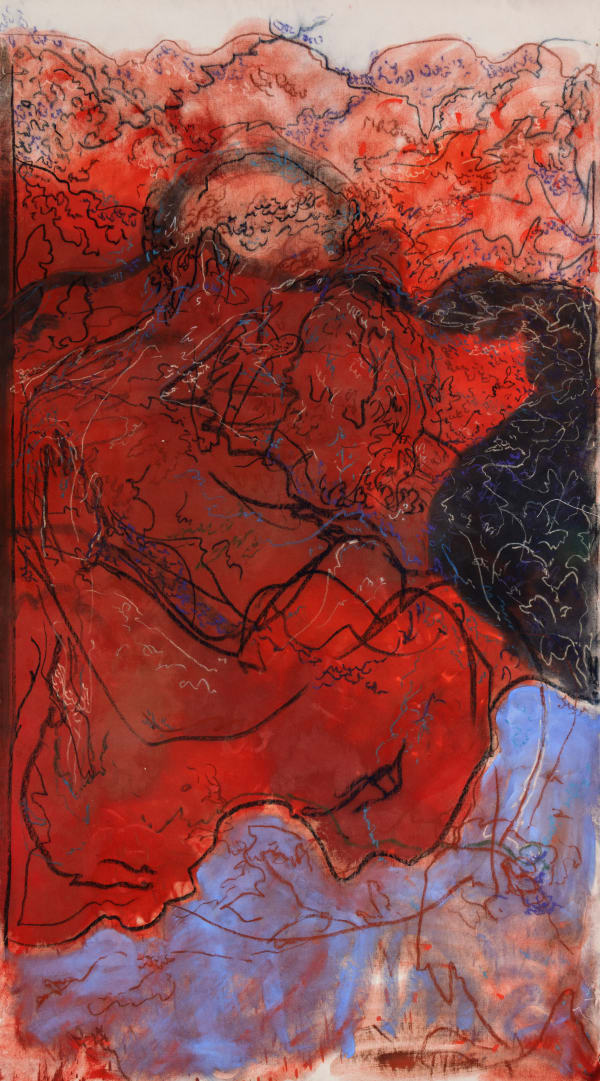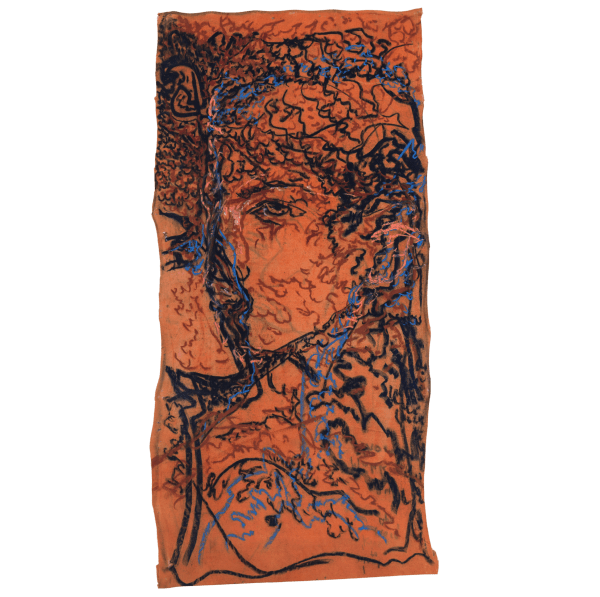







Malik: The residency has allowed me to delve deeply into my explorations of my own desires and my inquiries into my memory and psyche. There's been a meaningful dialogue between these personal reflections and the figurative history of art I've been exposed to during this experience—an immersion into Rome, Tuscany, and Florence.
Malik: The concept of a relationship has become almost a muse within this body of work. This exploration stemmed from my desire to depict male figures within visual settings that could represent my lived experience and inner worlds.
Malik: I believe the work captures the intersection of personal drive and the influence of the art I've encountered. A preliminary inspiration was the sculpture garden at Villa Medici, featuring old replica Roman sculptures that narrated the story of gods slaughtering the children of a mortal who challenged them. These sculptures, dispersed among the flowers, were profoundly moving. The sculptural garden composition is called the ‘niobids group’ and it was composed by Balthus, the sculptural composite is intertwined with wild lush overgrown foliage and is composed as if it is a painting of war or a frieze.

Malik: I was particularly taken by the Italian Gothic art I saw at Barberini in Rome, especially the scene compositions. I'll send you photo references. The ability to communicate a story through divine art, specifically within the Catholic tradition, was intended to convey the stories of Christ to worshipers. I aim to translate the spirit through imagery in a similar way, taking my inner world and expressing it visually.
Malik: While I deviate from traditional divine art by using space for abstraction to explore deeper psychological realms, the church references were inspiring in terms of their composition.
Malik: I made line drawings of these scenes, sketching furiously to capture as much information as possible. Filippo Lippi's religious work was particularly inspiring and significantly influenced many of my pieces. At the Hendrick Christian Anderson Museum in Rome, the sculptures of figures embracing and kissing were especially evocative. Their almost androgynous forms were fascinating to sketch, and I produced many drawings of them.
Malik: These sculptures became muses for me, embodying ideas of figures connecting and coming together. The composition of these sculptures feels like a study of humanity—not just the figurative form, but also a commentary on the human experience, which is what I strive to achieve in my work.
This website uses cookies
This site uses cookies to help make it more useful to you. Please contact us to find out more about our Cookie Policy.